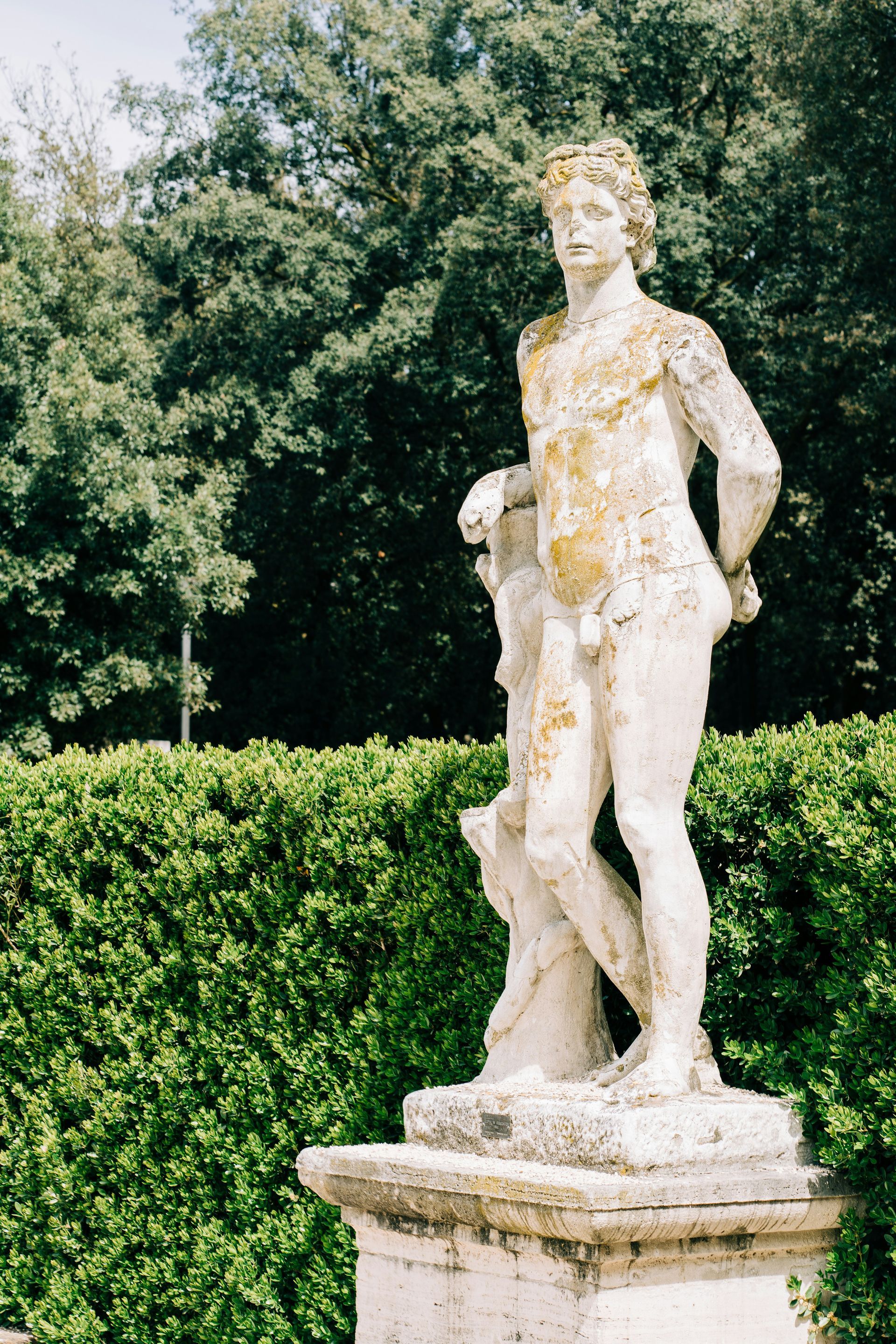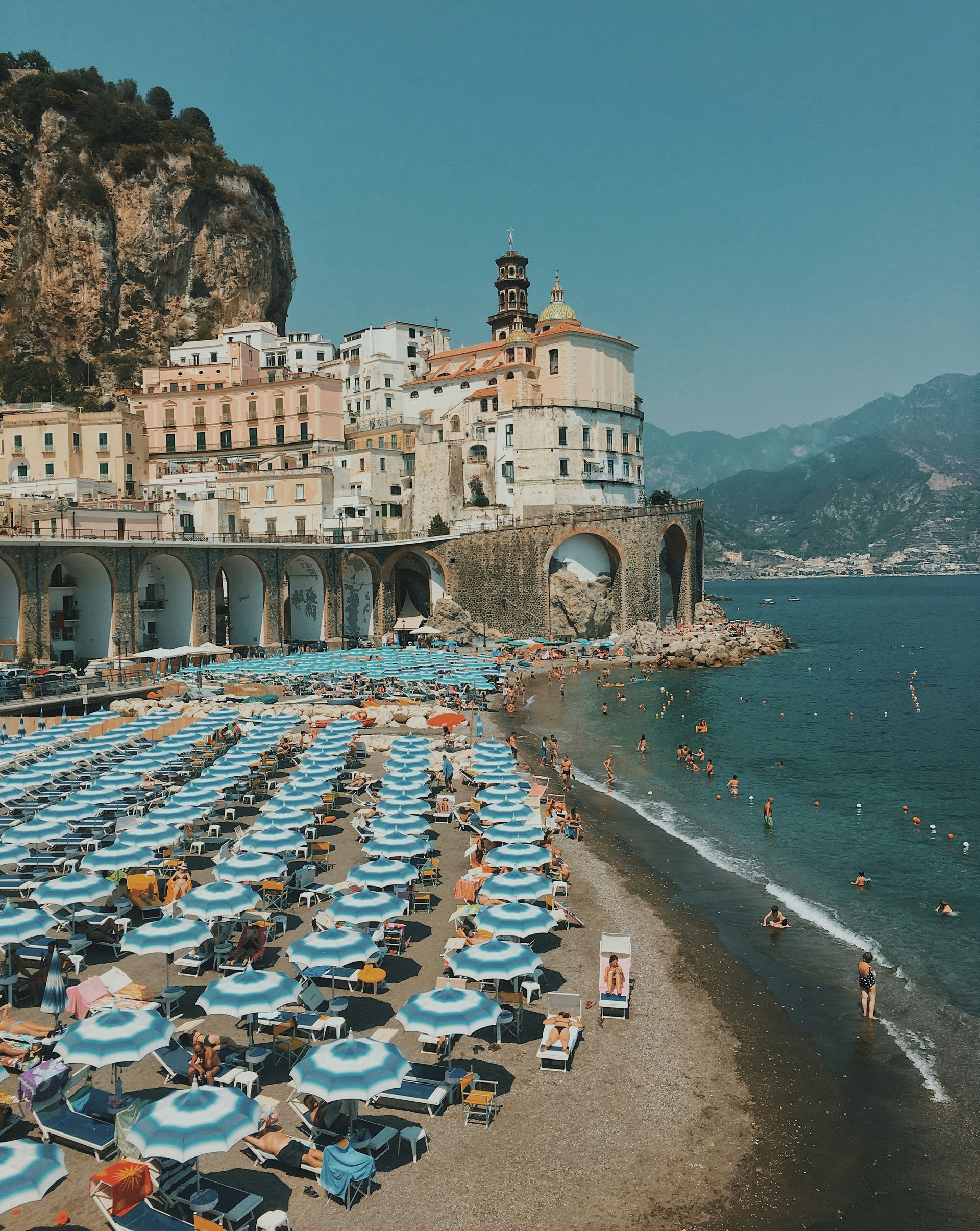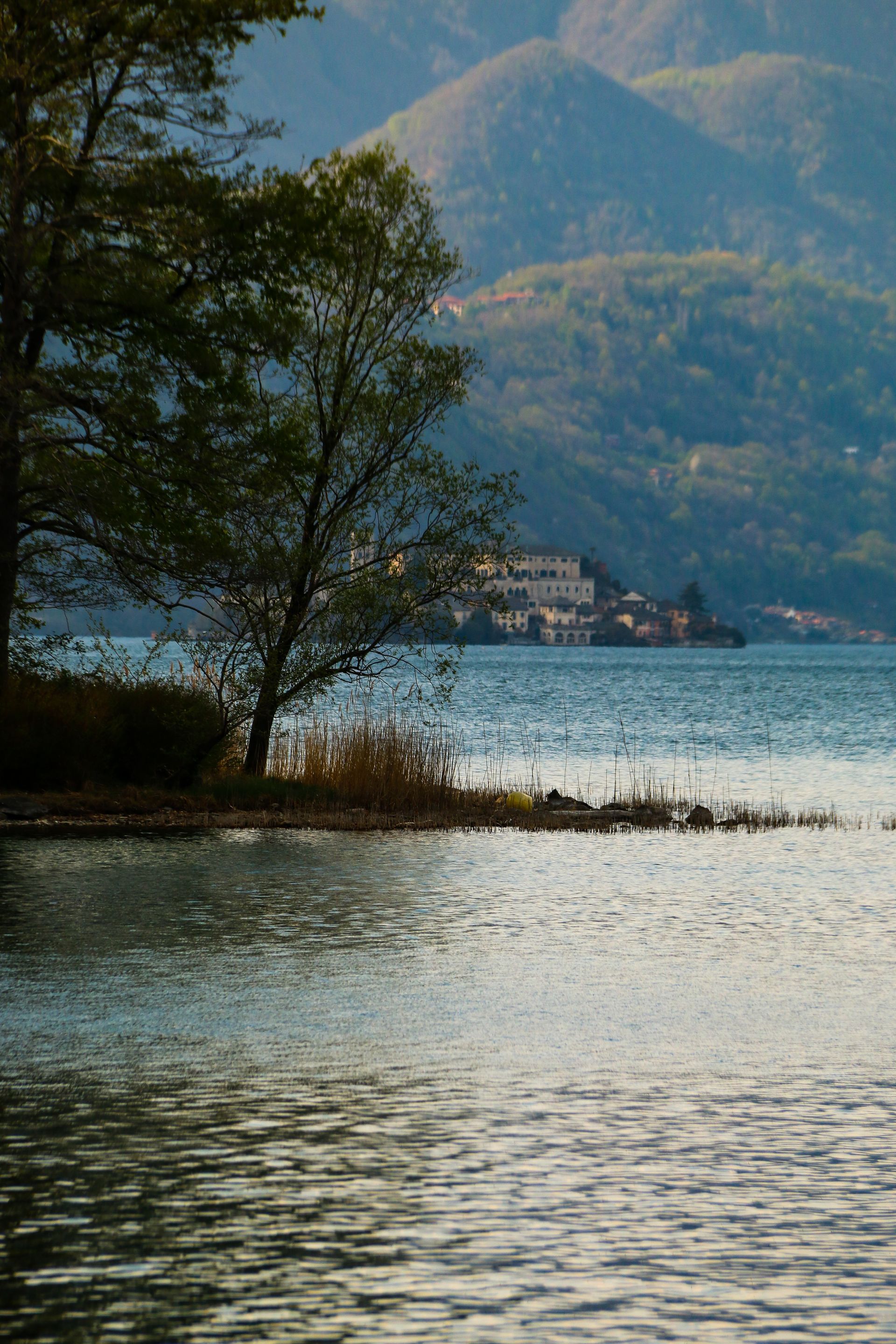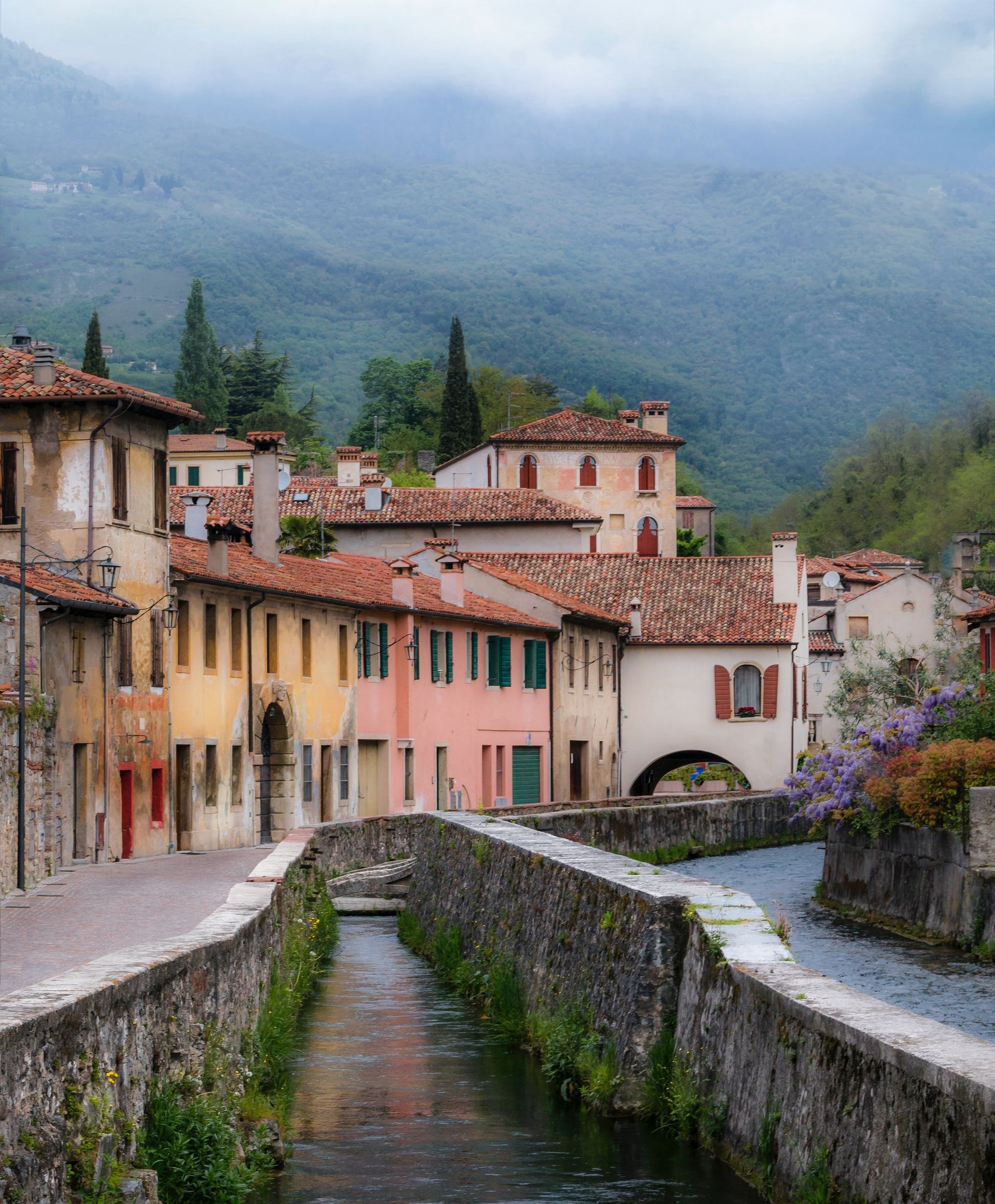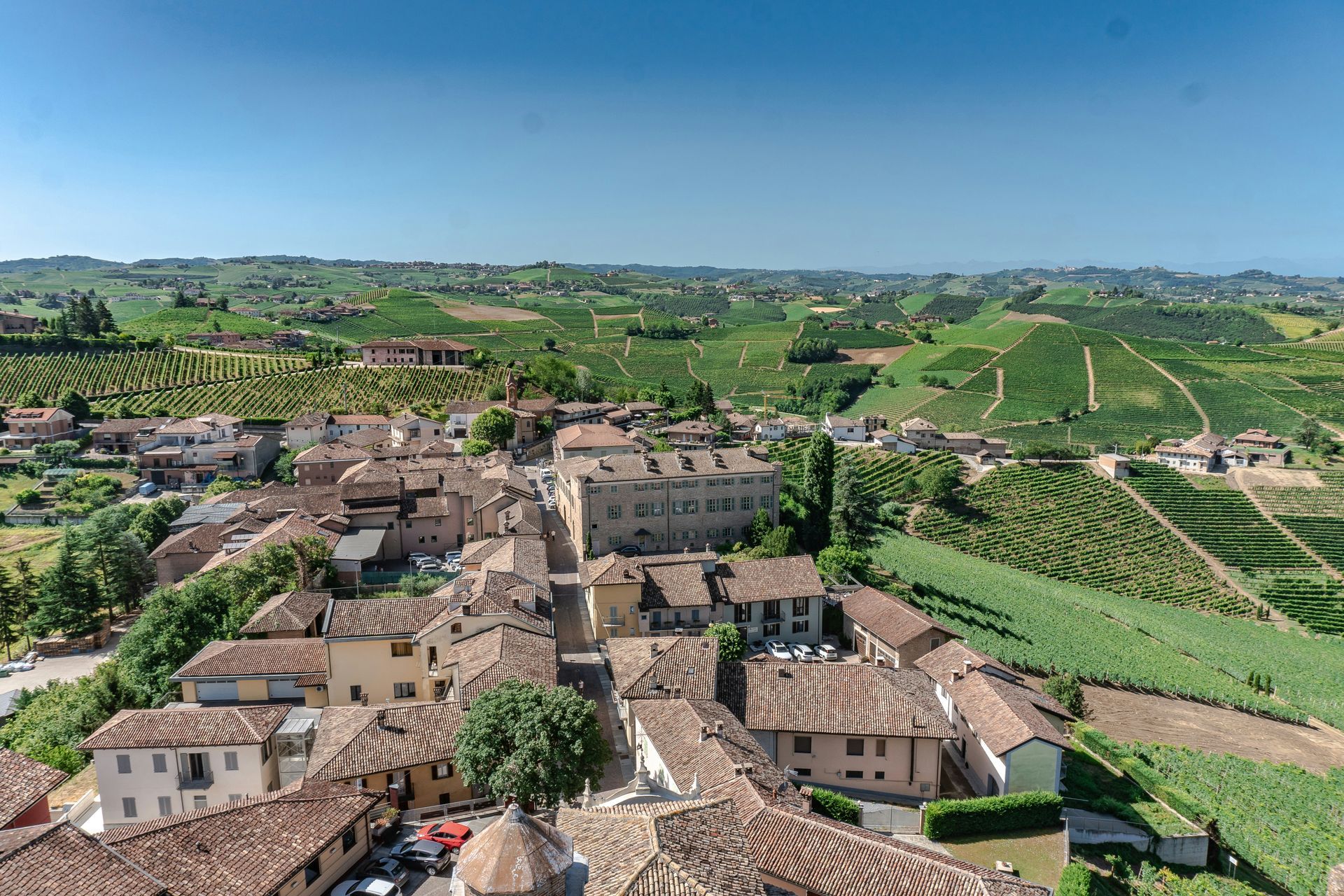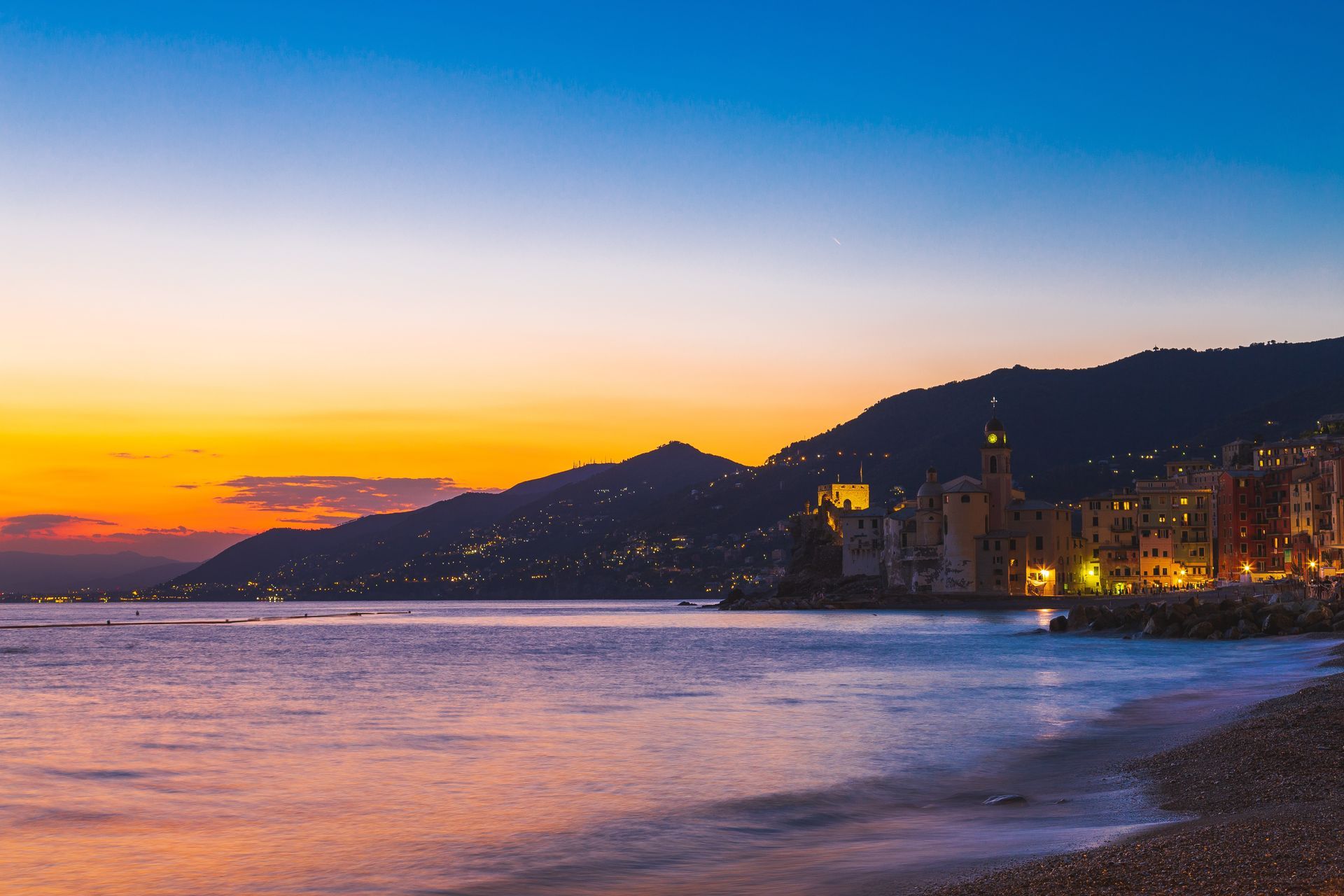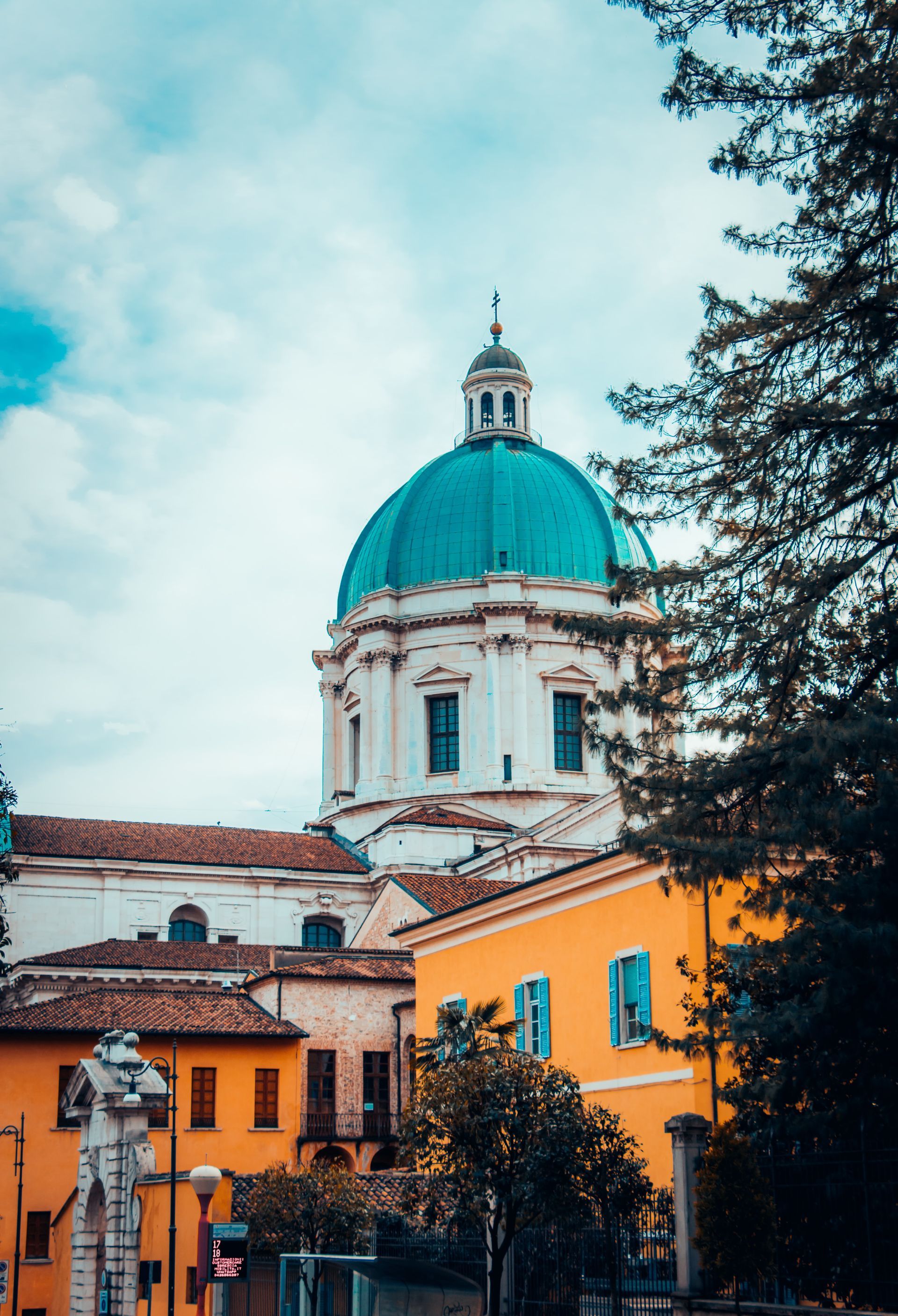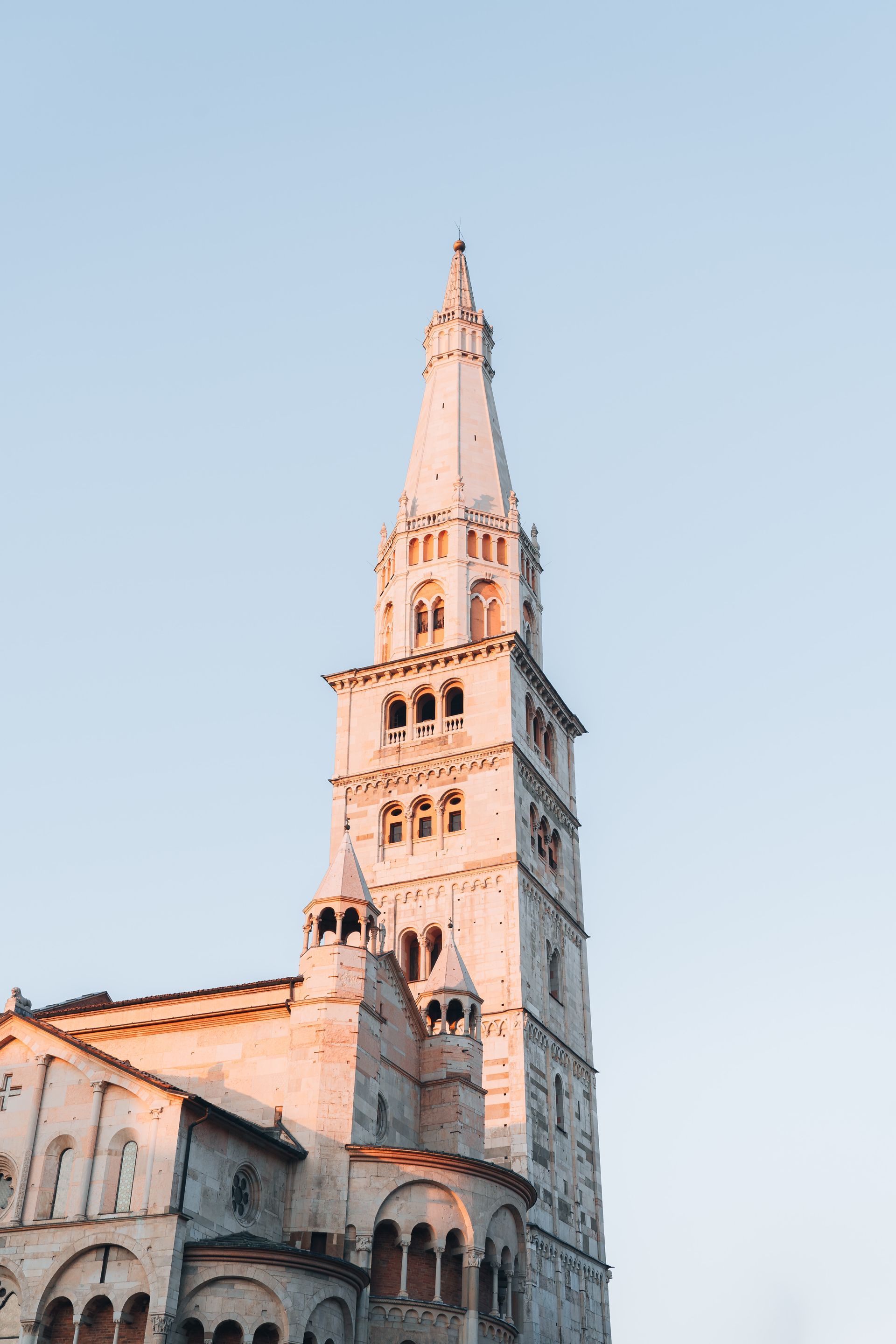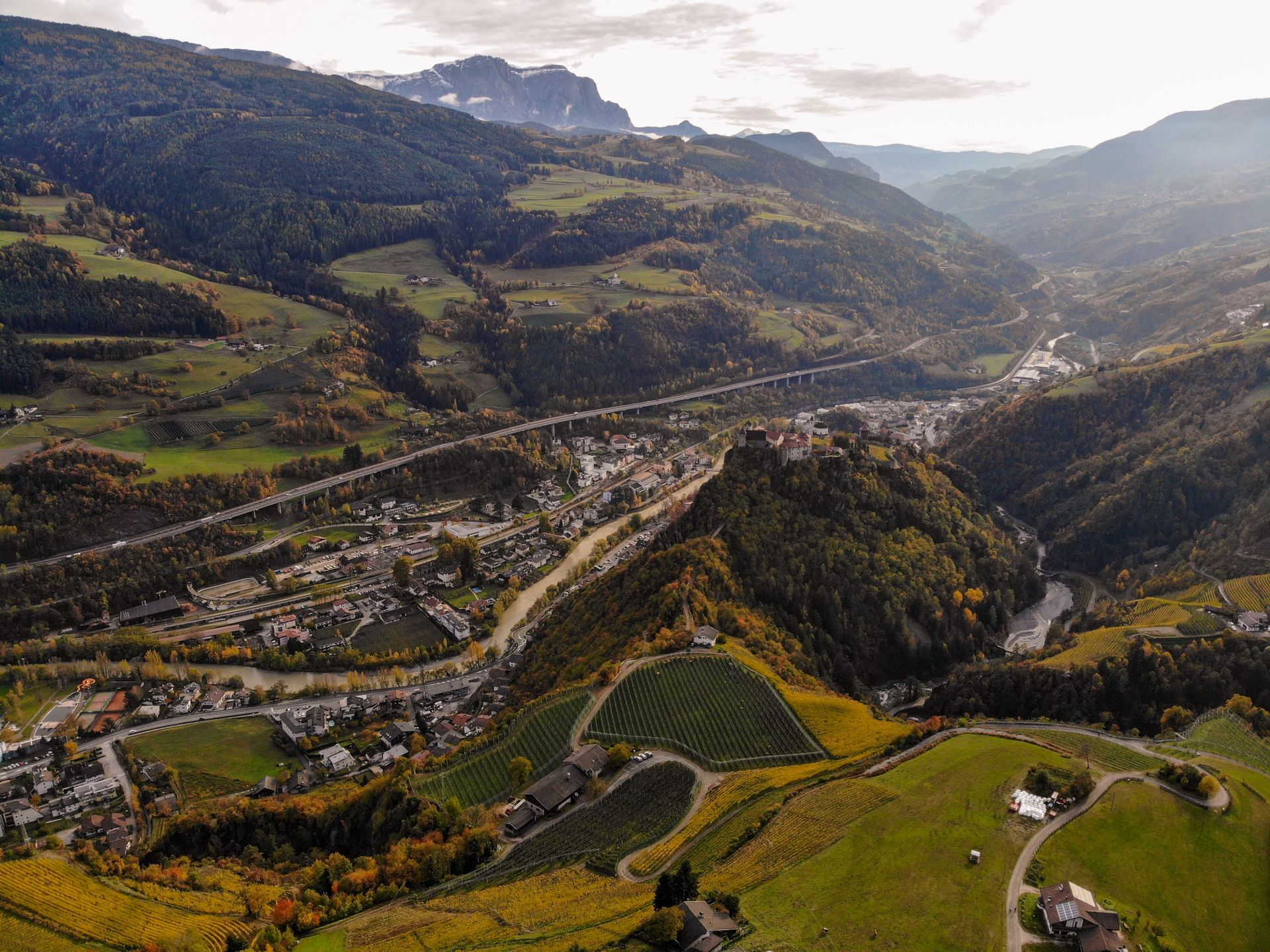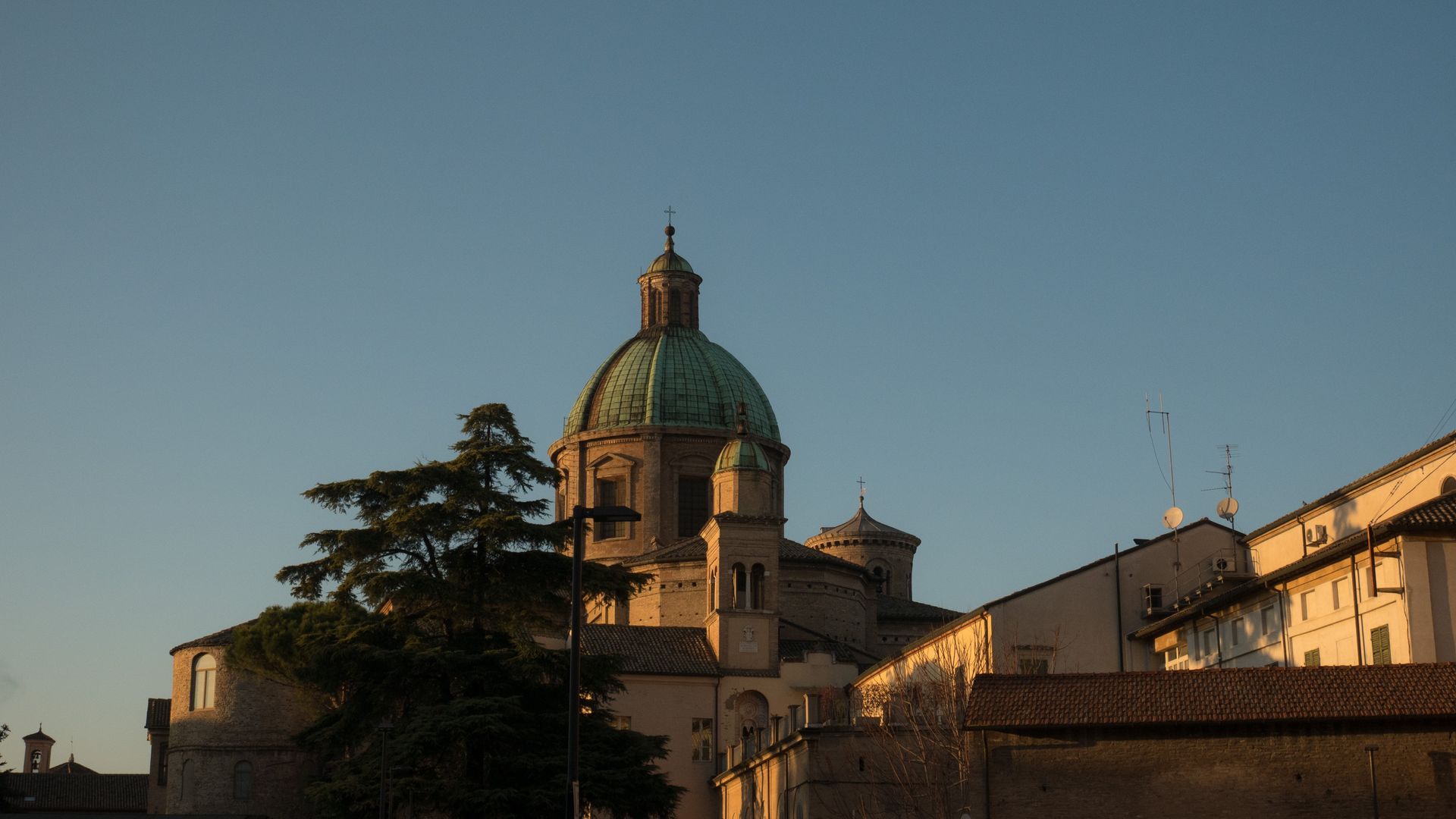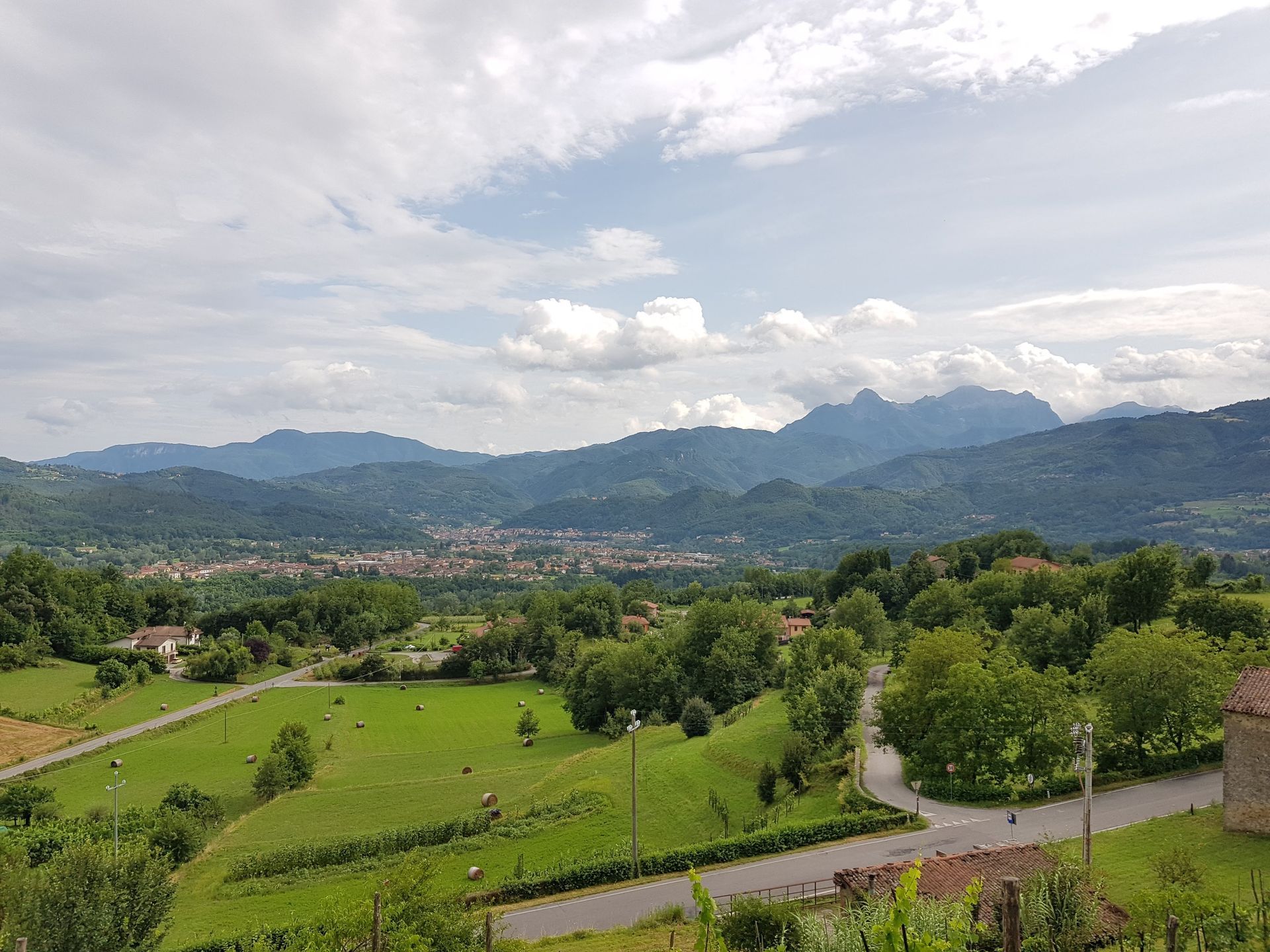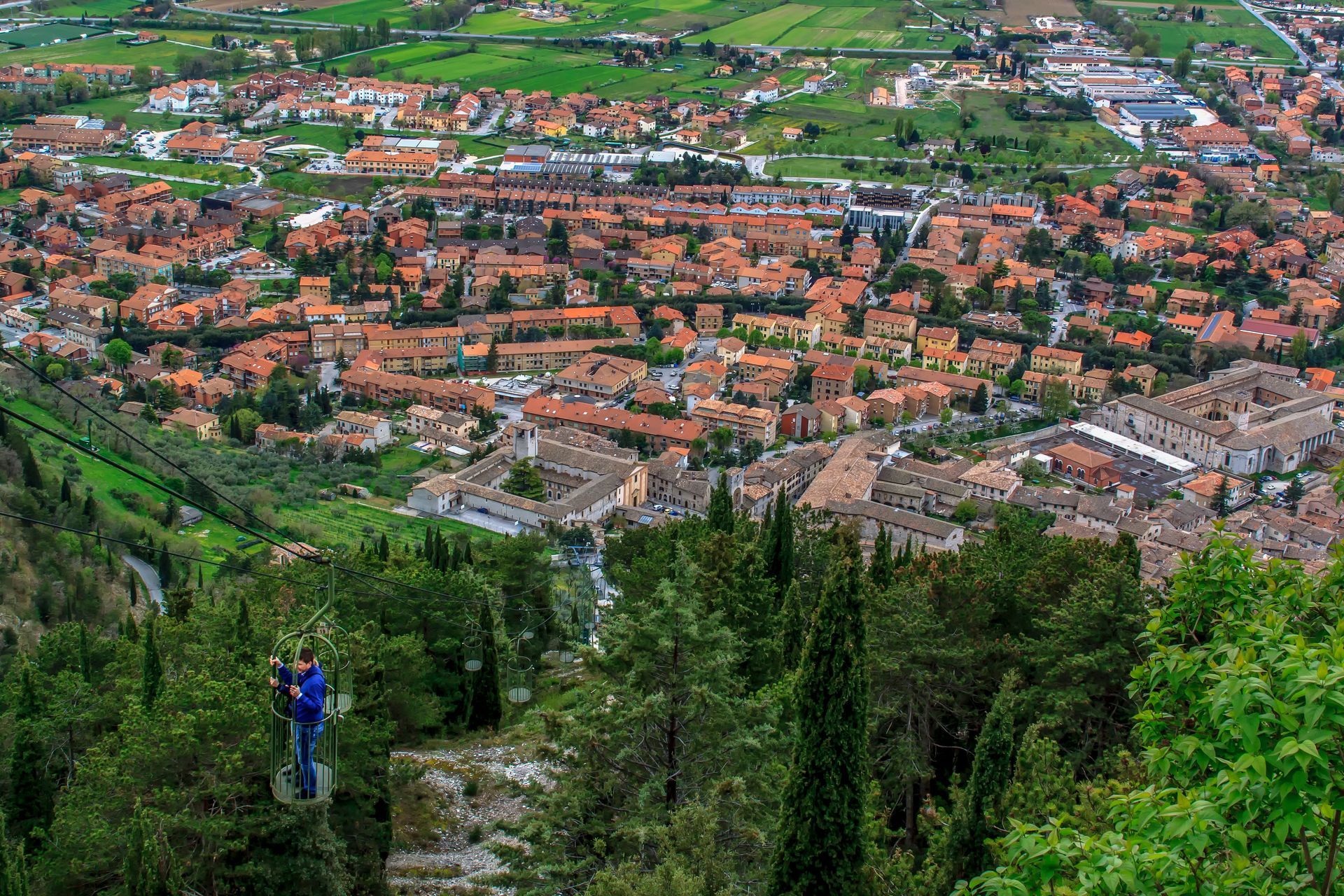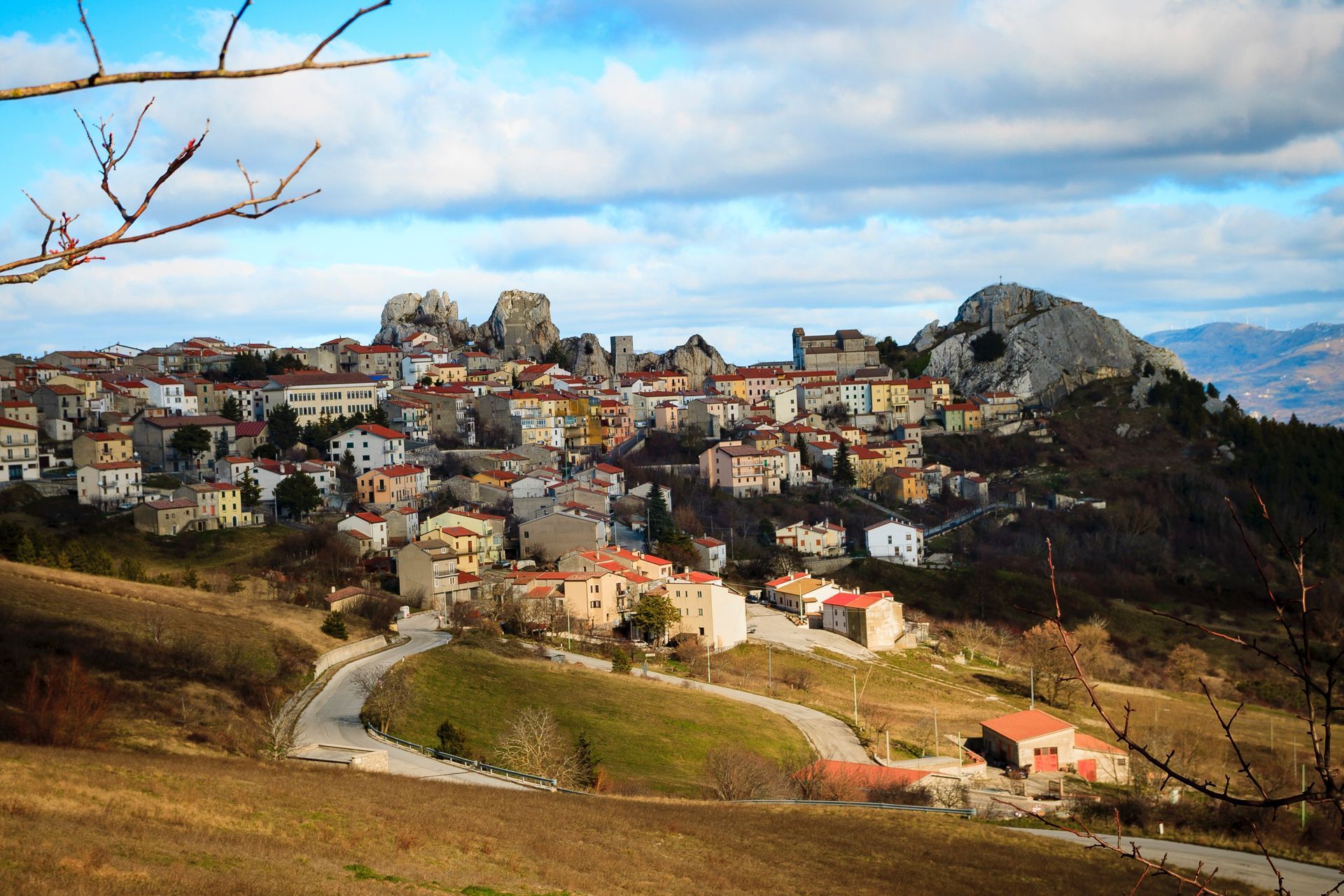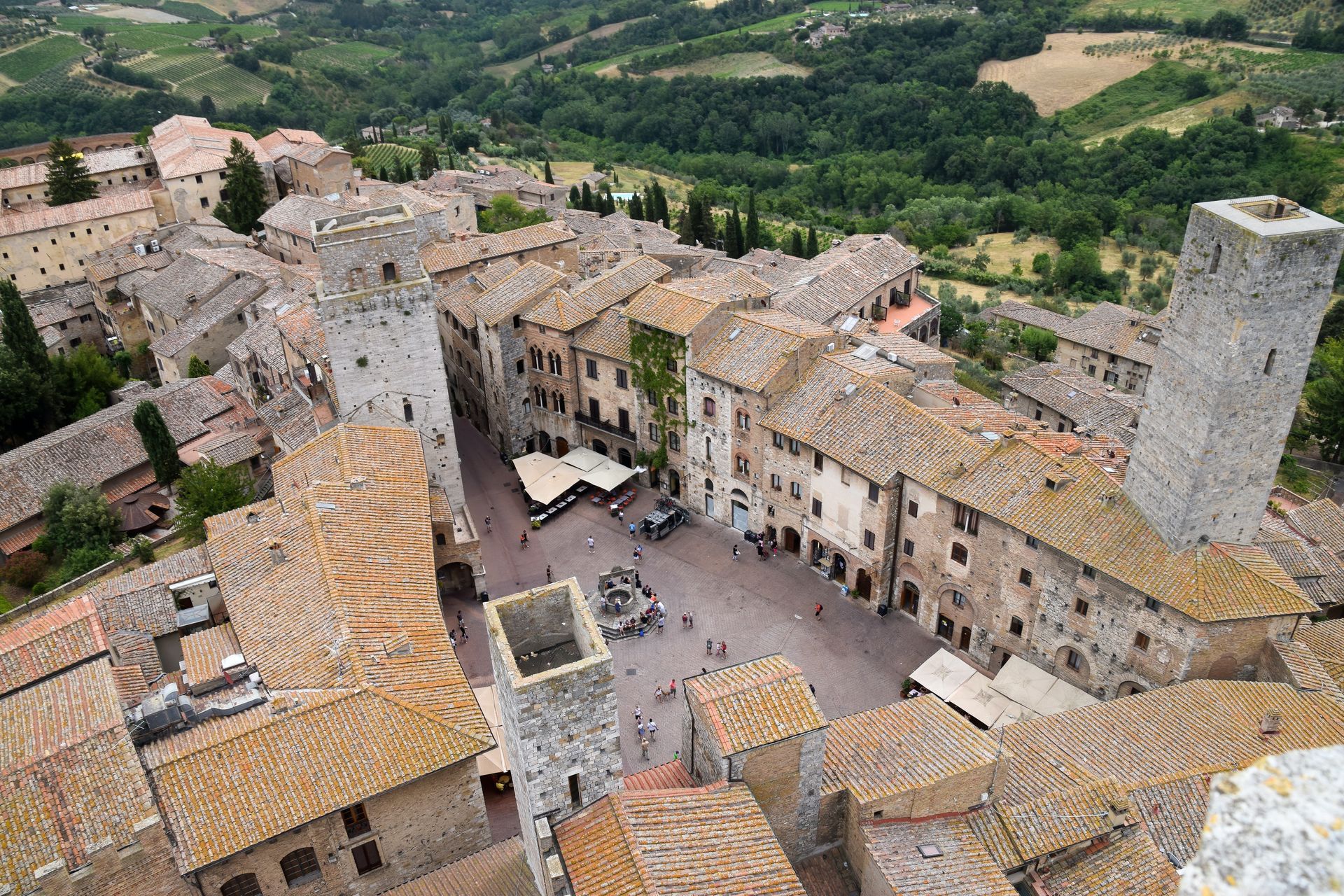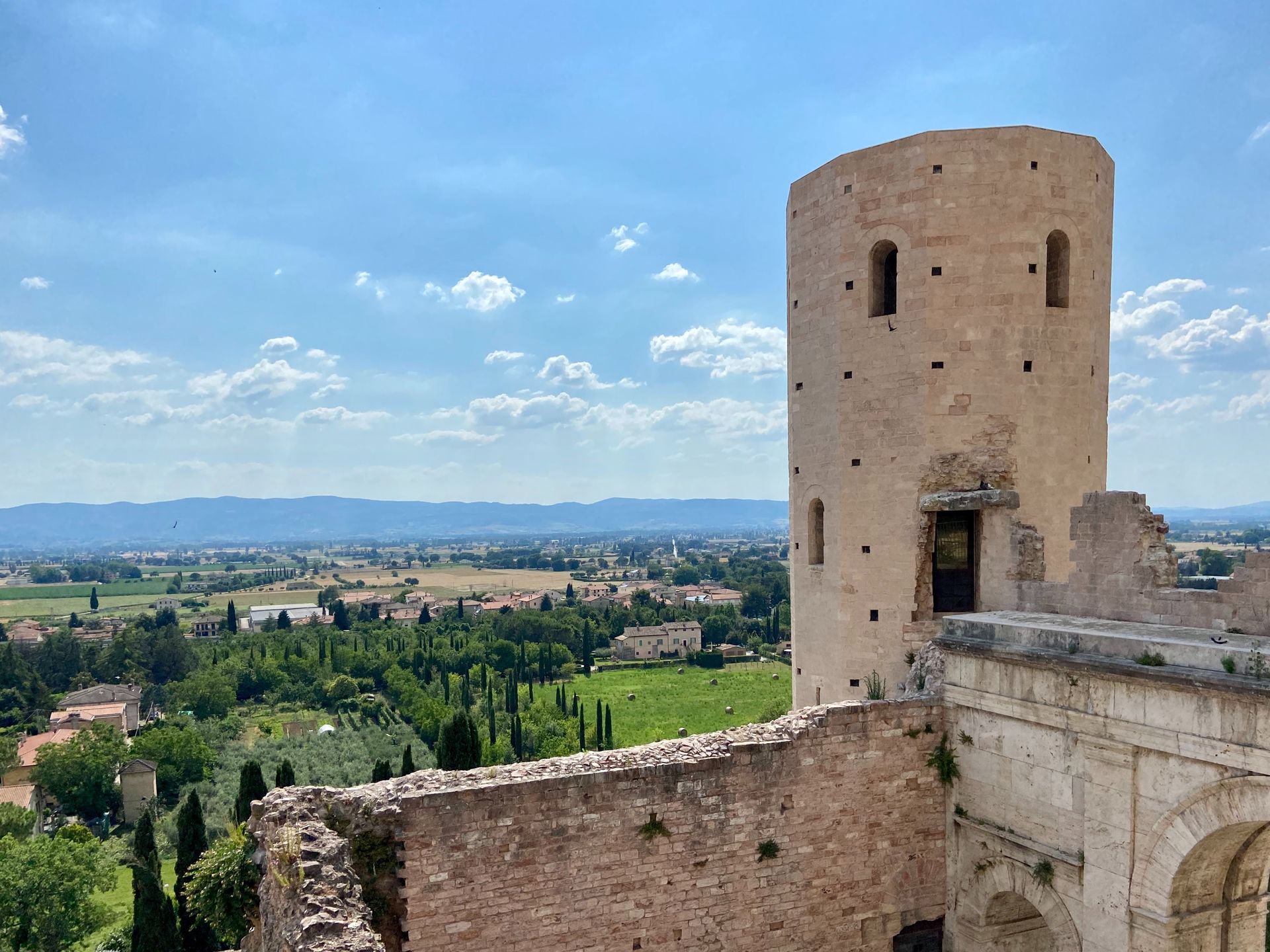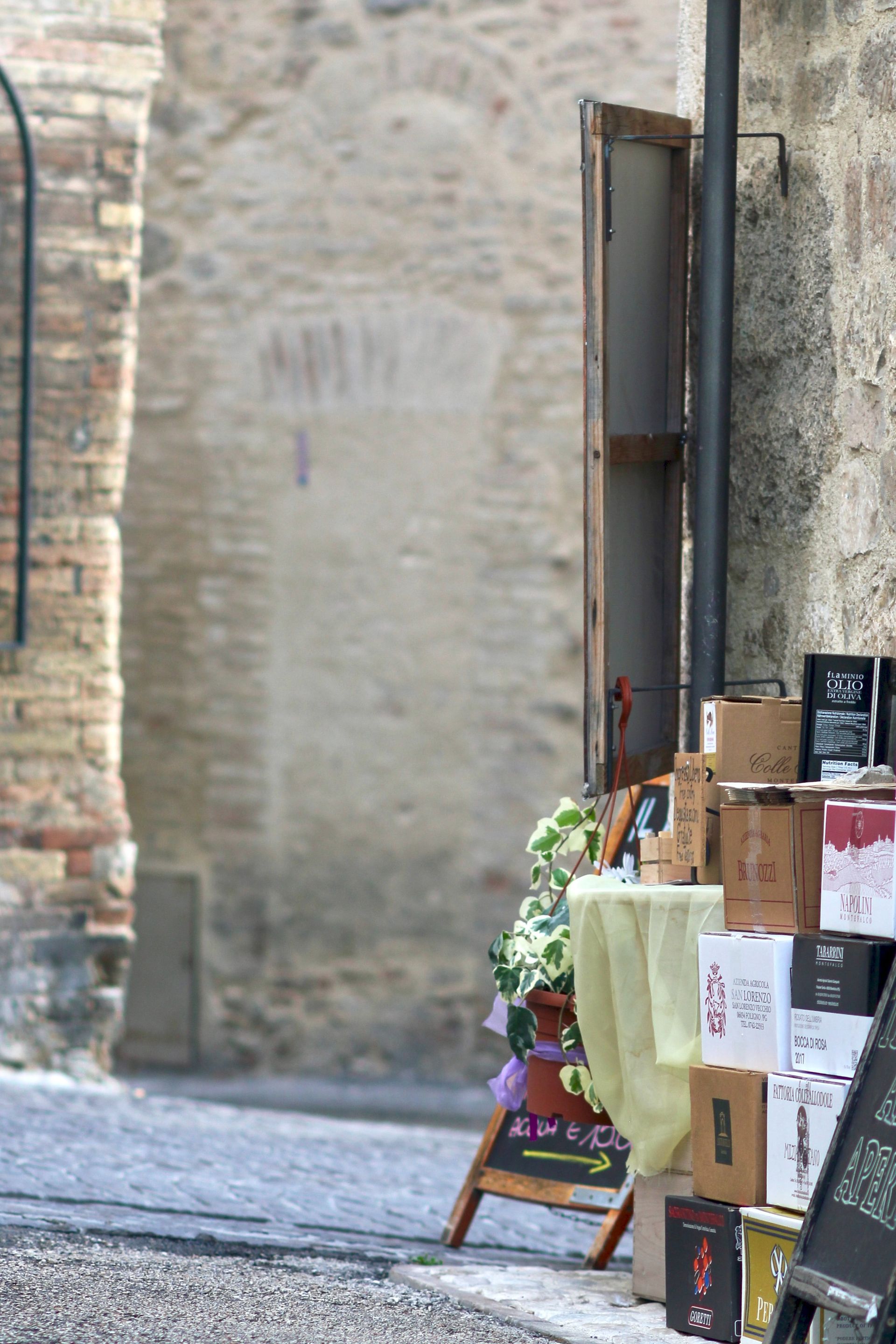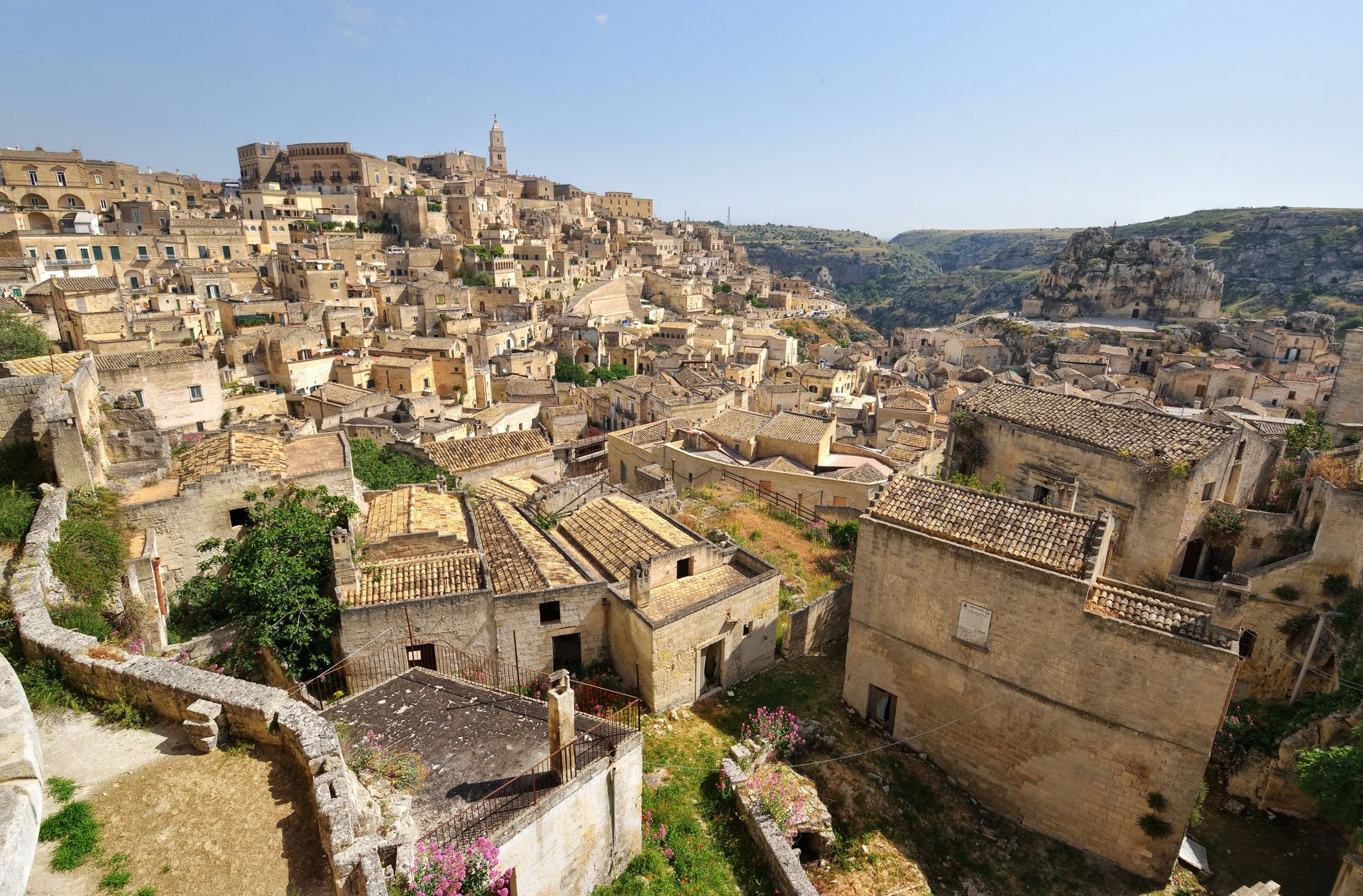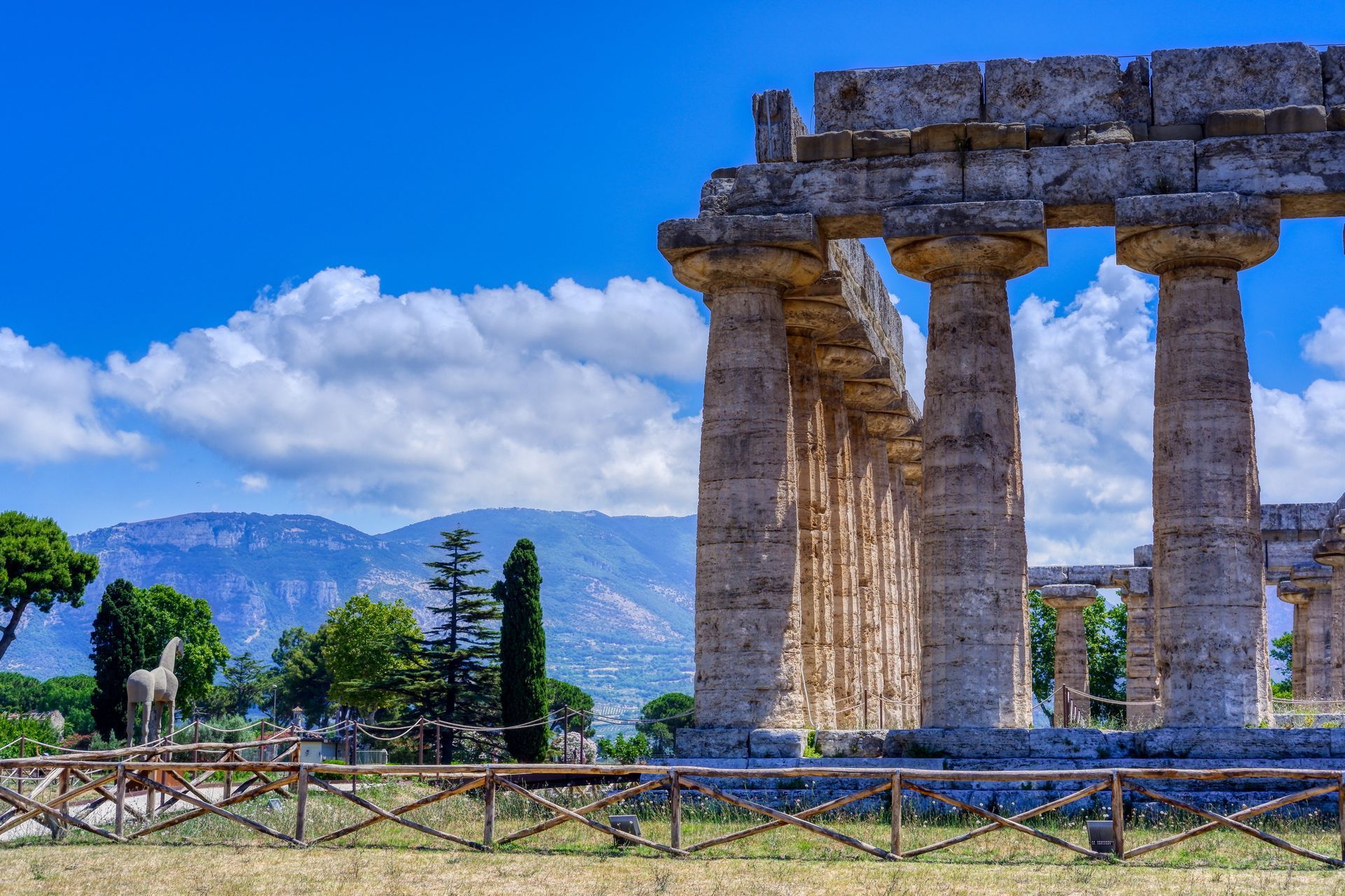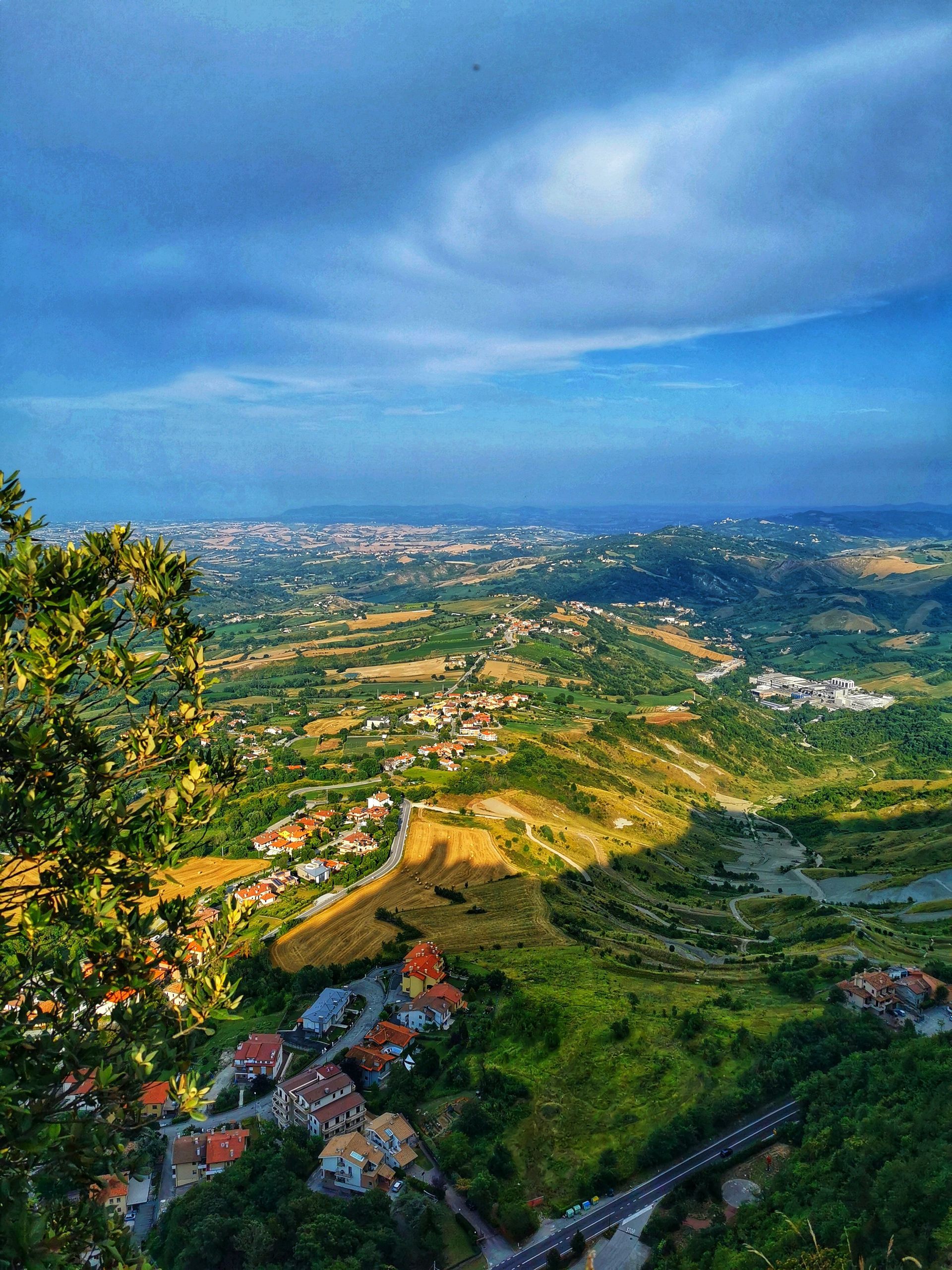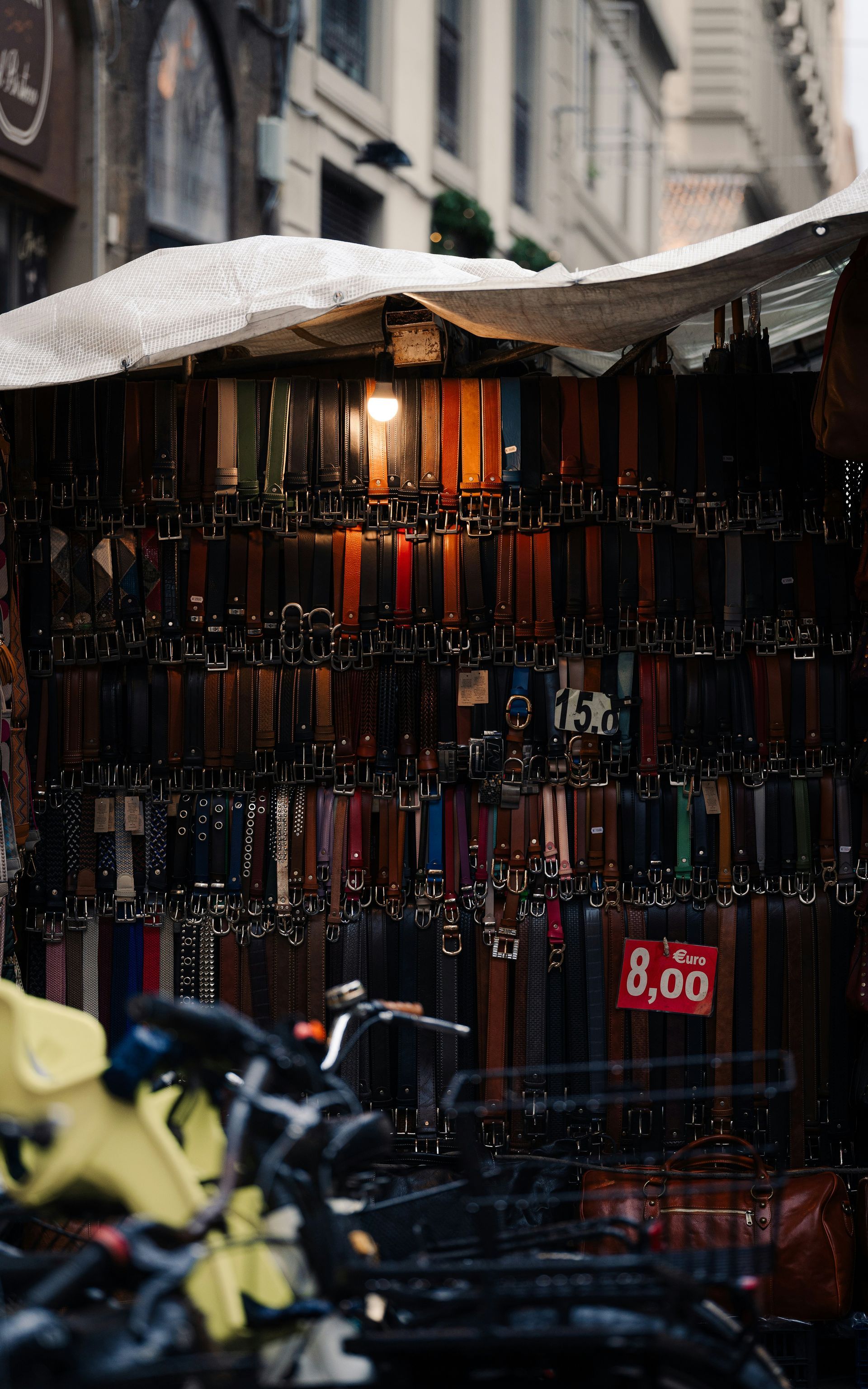Spreading Smile across the globe
Hidden Gems of Northern Italy
Hidden Gems of Italy are a testament to the country's diverse and enchanting beauty, often concealed from the traditional tourist routes. While Italy is celebrated for its iconic cities like Rome, Florence, Venice, and the Amalfi and Cinque Terre coasts, it's the lesser-known destinations that promise a unique journey. These unexplored regions offer travellers a chance to experience Italy's authentic culinary delights, rich historical narratives, and stunning natural landscapes. From the northern reaches to the southern shores, these Hidden Gems of Italy reveal a different facet of this remarkable nation.
Lake Orta - Piedmont
Hidden Gems of Italy come to life at Lake Orta, tucked away near the Swiss border in the heart of Piedmont. This hidden paradise often evades the spotlight compared to its more famous counterparts like Lake Como and Lake Garda. The historic town of Orta San Giulio, with its Baroque and Medieval architecture, cobbled streets, and idyllic Piazza Motta, enchants visitors. The glistening waters of the lake itself invite moments of serenity. What makes Lake Orta truly extraordinary is the mysterious island at its centre—a tranquil sanctuary inhabited by resident nuns.
Treviso - Veneto
Among the Hidden Gems of Italy, Treviso stands as a city in the Veneto region that retains its genuine northern Italian charm. Meandering through its narrow cobbled lanes, picturesque canals, and medieval city walls feels like a step back. Positioned on the fringes of the renowned Prosecco wine region, Treviso provides a delightful excuse for an aperitivo with a glass of Italy's renowned sparkling Prosecco.
Aosta Valley
Nestled among the bordering landscapes of Switzerland and France, the Aosta Valley showcases breathtaking alpine scenery, perched castles, and traditions that thrive throughout the year. When spring and summer arrive, the region's walking trails entice explorers. This season also brings lively festivals that celebrate folk traditions that date back to medieval times. Be sure to savour the local cheese Fontina, a culinary delight that embodies the spirit of this Hidden Gem of Italy.
Alba - Piedmont
Alba, a sought-after destination among Italy's hidden gems, is situated in the vineyards of the Langhe Hills. Once adorned with a hundred towers, Alba exudes a charming rural ambience. It's renowned for its autumn truffle festival, a gastronomic event that captures the essence of the region. Alba is also celebrated for its dark chocolate, hazelnut groves, white truffles, and prestigious wineries. It's from this very region that the sought-after Barolo wine originates.
Camogli - Liguria
Camogli, a typical and vibrant Italian seaside village on the Ligurian Riviera di Levante, perfectly embodies the spirit of the Hidden Gems of Italy. Towering, brightly painted houses dominate the town, and it has become a magnet for visitors seeking pristine beaches, Ligurian cuisine, the rustic fishing marina, Italian culture, and a tranquil natural setting. Camogli has earned its reputation for culinary excellence, focusing on fish and seafood, particularly anchovies and tuna, as well as the iconic pesto sauce made from basil and pine nuts.
Brescia - Lombardy
Hidden Gems of Italy often come alive through history, and Brescia is no exception. In this small city, history unfolds through a tapestry of architectural styles, spanning Roman, Medieval, Renaissance, Baroque, and even Art Deco. Walking through Brescia feels like a journey through time, and a visit to the captivating Piazza della Loggia, framed by a stunning Venetian-style palace at its heart, is a must for history enthusiasts.
Trieste
Trieste is a refreshingly unique destination, an Italian city positioned near the Slovenian border with its dialect that's a delightful blend of Austrian-German, Greek, Croatian, and Italian. Trieste's neoclassical waterfront is a sight to behold, with its marina brimming with stylish, glimmering yachts. The city's offerings include clear blue skies, expansive sandy beaches, city lidos, and the surrounding vineyards. Trieste is a Hidden Gem of Italy that belongs on every traveller's Northern Italian itinerary.
Modena - Emilia-Romagna
Modena is famed for its Hidden Gems of Italy, including balsamic vinegar, Luciano Pavarotti, the Romanesque cathedral, and the nearby Ferrari museum. Beyond these illustrious attractions, Modena reveals a treasure trove of remarkable restaurants. Massimo Bottura's Osteria Francescana has twice earned a place among the world's top 50 eateries, showcasing the culinary excellence of this Hidden Gem. While in Modena, don't miss the chance to savour local specialities like stuffed tortellini and sparkling Lambrusco wine, the perfect complement to your gastronomic journey.
Chiusa / Klausen - South Tyrol
Chiusa, also known as Klausen, is one of Italy's most picturesque villages. It is situated on the banks of the Isarco River in the South Tyrolean region near the Austrian border. Chestnut groves, green fields, vineyards, and farmsteads surround the town. In the village itself, visitors are captivated by narrow alleyways, coats of arms, large bay windows, crenellated facades, and the two main squares.
Ravenna - Emilia-Romagna
Ravenna offers a treasure trove of experiences among the Hidden Gems of Italy. This city is a feast for the senses, with its diverse offerings of food, music, art, culture, history, beaches, wine, and mosaics. Ravenna is home to eight UNESCO-listed sites, making it a must-visit for history and art enthusiasts. It's also known for its two-month-long music festival, Dante Alighieri's tomb, local culinary delights, nearby beach resorts, and the opportunity to explore pinewood forests. The city's fame is derived from its stunning mosaics, dating from the fifth and sixth centuries, scattered throughout the town.
In conclusion, Italy's Hidden Gems invite you to embark on a journey less travelled, where the rich tapestry of history, diverse cuisine, and breathtaking landscapes come to life. These lesser-known destinations provide an authentic Italian experience, away from the bustling crowds, revealing the nation's soul in its purest form. Explore these Hidden Gems to uncover Italy's hidden treasures.
Hidden Gems of Central Italy
Hidden Gems of Italy beckon the adventurous traveller to explore the lesser-known treasures that this remarkable country holds. From the picturesque valleys of Tuscany to the medieval charm of Umbria, the mysterious landscapes of Molise, and the architectural wonders of San Gimignano, these destinations promise unforgettable experiences.
Garfagnana - Tuscany
The Garfagnana region is a hidden gem in the beautiful Tuscan valley north of Lucca. It is crossed by the Serchio River, and the landscape is characterized by fertile greenery, rugged mountains, and charming villages. Outdoor activities such as hiking, walking, and mountain biking are enjoyed by many people in this area. Garfagnana is home to several one-of-a-kind attractions, including a ghost town, a wind cave, and the Devil's Bridge at Borgo a Mozzano.
Gubbio - Umbria
Umbria hides many treasures, and a particular favourite among Hidden Gems of Italy is the Medieval hilltop town of Gubbio. Gubbio, a city with a history dating back over 2,000 years, is a maze of cobbled streets and stone buildings that have been perfectly preserved. Visitors can take a cable car to the summit of Mount Ingino to enjoy panoramic views of the surrounding area. In addition, Gubbio hosts Italy's oldest event, the Corsa dei Ceri, in which teams race through the streets carrying massive wooden candles.
Molise
Molise is Italy's second-smallest region and one of its best-kept secrets. Hidden Gems of Italy are plentiful here. The picturesque town of Agnone is renowned for its artisanal bells, produced by the oldest family-run bell foundry in the world. Meanwhile, Campobasso, the regional capital, boasts a stunning medieval old town. Molise offers a captivating mix of historical charm and natural beauty, with rugged mountains, rolling hills, and pristine beaches along the Adriatic coast.
San Gimignano - Tuscany
Nestled in the heart of Tuscany, San Gimignano boasts medieval architecture and, of course, its famous towers. The town's historic centre is a UNESCO World Heritage site, known for its fourteen stone towers that once symbolised wealth and power. San Gimignano offers a glimpse into medieval Tuscany, with well-preserved streets and squares that transport visitors to another time. Besides the towers, make sure to explore the Collegiate Church and indulge in the local Vernaccia wine, a crisp white wine produced in the region.
Spello - Umbria
Another gem in the heart of Italy, Spello enchants visitors with its winding medieval streets and stunning floral displays. Known as the "Città Infiorata" or "flower town," Spello hosts the Infiorata festival, during which the streets are carpeted with intricate flower petal designs. This event occurs in early June and is a magnificent spectacle. Outside of the festival, Spello's charm continues with its well-preserved historic centre and beautiful churches.
Trulli of Alberobello - Apulia
Apulia, or Puglia, is famous for its unique trulli houses, and Alberobello is the epicentre of this architectural marvel. These whitewashed conical homes are a UNESCO World Heritage Site that offers a glimpse into the region's history. Visitors can even stay in trulli that have been converted into accommodations, providing a truly immersive experience.
Norcia - Umbria
Nestled in the Sibillini Mountains, Norcia is renowned for its gastronomy. This charming town produces exceptional cured meats, particularly prosciutto and salami. For food enthusiasts, Norcia is a true Hidden Gem of Italy. Explore local shops, taste the region's specialities, and visit the beautiful town square. Nature enthusiasts will also find hiking trails and natural beauty in the nearby Monti Sibillini National Park.
Montefalco - Umbria
Montefalco is often called the "Balcony of Umbria" for its stunning views over the surrounding valley. This charming town is also known for its wine, particularly Sagrantino, one of Italy's most robust red wines. Montefalco's medieval centre is picturesque and hosts several churches with remarkable frescoes, making it a cultural and gastronomic gem.
Castelluccio di Norcia - Umbria
High in the Sibillini Mountains, Castelluccio di Norcia is a quaint village known for its stunning wildflower blooms in late spring and early summer. The surrounding plateau becomes a colourful tapestry, attracting photographers and nature enthusiasts. Besides the flowers, visitors can enjoy hiking and take in the breathtaking scenery. Hidden Gems of Italy like Castelluccio di Norcia provide a unique connection to nature and the changing seasons.
In the heart of Italy, a treasury of Hidden Gems awaits the intrepid traveller. From the mysterious ghost town of Garfagnana to the ancient charms of Gubbio, the enchanting landscapes of Molise, and the medieval splendours of San Gimignano, these lesser-known destinations reveal Italy's diverse beauty and rich history. Journey through the tranquil streets of Spello, marvel at the unique trulli houses in Alberobello, savour the culinary delights of Norcia, and bask in the vibrant blooms of Castelluccio di Norcia. These Hidden Gems of Italy promise an unforgettable adventure in a land of timeless wonder.
Hidden Gems of Southern Italy
Italy, a land of rich history, captivating art, and exquisite cuisine, is known for its iconic cities and world-famous landmarks. Despite the tourist-filled streets and crowded piazzas, the country holds many hidden gems—lesser-known destinations that offer a more intimate and authentic experience. These places, tucked away in various corners of Italy, are a testament to the nation's diverse and enchanting beauty, waiting to be explored by the discerning traveller. From medieval towns perched atop hills to charming coastal villages and ancient archaeological sites, the Hidden Gems of Italy promise unique adventures and unforgettable memories.
Civita di Bagnoregio - Lazio
Civita di Bagnoregio is often called the "Dying Town" because of its gradual erosion over the centuries. This medieval village is perched on a hilltop and can only be reached by a long footbridge. It's a unique destination, seemingly suspended in time, and is the perfect Hidden Gem for history buffs and photographers.
Matera - Basilicata
Matera, known for its cave dwellings, is one of Italy's most intriguing and unique destinations. The Sassi di Matera, a historic cave settlement, is a UNESCO World Heritage Site. Matera is gaining popularity but still qualifies as one of the Hidden Gems of Italy. Touring this labyrinth of stone-carved rooms and narrow streets offers an incredible historical journey.
Sperlonga - Lazio
Sperlonga is a charming coastal town characterized by its pristine beaches, winding alleys, and picturesque piazzas. Nestled between Rome and Naples, Sperlonga is often overlooked by travellers. A visit here reveals a relaxed and authentic Italian atmosphere, perfect for strolls and seaside relaxation. Take advantage of the Grotto of Tiberius, a cave once used as the emperor's villa and now a museum.
Paestum - Campania
The ancient ruins of Paestum, originally a Greek colony known as Poseidonia, provide an extraordinary window into Italy's history. The temples are exceptionally well-preserved, ranking among the best-preserved in the world. Paestum is also home to a fascinating archaeological museum that displays artefacts from the site. Enjoy a step back in time amid the Hidden Gems of Italy.
Castro - Apulia
Castro, a picturesque coastal town, boasts a historic centre perched on a rocky outcrop. Visitors can explore ancient churches, fortifications, and a charming harbour. Castro also has sea caves that can be explored by boat. The region's cuisine is a seafood lover's paradise, making this town a Hidden Gem for food enthusiasts as well.
Scilla - Calabria
Scilla, an idyllic coastal village in Calabria, offers stunning sea views and hidden beaches. The town is known for the Ruffo Castle, which dominates the landscape, and the legendary sea monster Scylla from Greek mythology. The charming village is a serene and lesser-known alternative to some of the more crowded Italian seaside destinations.
San Marino
San Marino is a microstate surrounded by Italy and is one of the world's oldest republics. It's a destination that's often missed, making it a true Hidden Gem. San Marino boasts dramatic mountaintop views, historic architecture, and unique attractions like the Guaita Tower and the Palazzo Pubblico. For collectors, the country is also known for its beautiful stamps and coins.
Conclusion
Discovering the Allure of Hidden Gems of Italy
Hidden Gems of Italy offers travellers an authentic experience, far removed from the tourist-packed cities and famous landmarks. These lesser-known destinations unravel the genuine charm, culture, history, and culinary wonders that make Italy an endlessly fascinating country to explore. From the mountains of the North to the coasts of the South, each region holds its treasures, waiting to be discovered by those who venture off the beaten path. By exploring the Hidden Gems of Italy, you can craft a unique and unforgettable journey that deepens your appreciation of this incredible country. Plan your trip carefully, and you will be rewarded with the beauty, history, and flavours that characterize these enchanting places.
Artisanal Italy:
Spotlight on Traditional Crafts and Artisans Keeping Heritage Alive
Welcome to Artisan Italy, where time-honoured traditions and exquisite craftsmanship converge to create a tapestry of cultural richness and heritage. In this spotlight on traditional crafts and artisans, we delve into the heart of Italy's artisanal legacy, celebrating the skilled hands and artistic visionaries who keep these ancient crafts alive. From the cobblestone streets of Florence to the bustling markets of Sicily, Italy's artisanal landscape is as diverse as it is vibrant.
Here, artisans practice centuries-old techniques passed down through generations, transforming raw materials into works of art that embody the essence of Italian culture and creativity. Join us as we journey through the workshops and studios of master craftsmen, discovering the stories behind each handcrafted piece and gaining insight into the dedication and passion that infuse every creation. From ceramics and leatherwork to textiles and glassblowing, Artisan Italy invites you to immerse yourself in the timeless beauty and artistry of Italy's artisanal heritage.
Discovering the Heritage of Italian Crafts
In delving into the heritage of Italian crafts, we uncover a rich tapestry of tradition, innovation, and cultural significance that has endured for centuries. Artisan Italy serves as a vibrant mosaic of skilled craftsmen and women who meticulously preserve and perpetuate these age-old practices, ensuring that Italy's artisanal legacy remains vibrant and relevant in the modern world.
From the rolling hills of Tuscany to the sun-kissed shores of Sicily, each region of Italy boasts its own unique repertoire of crafts, reflecting the local landscape, history, and customs. Take, for example, the intricate art of Tuscan ceramics, where skilled artisans mold clay into exquisite pottery adorned with vibrant colors and intricate designs, echoing the beauty of the surrounding countryside.
Meanwhile, in Venice, the age-old tradition of glassblowing continues to thrive, with master glassmakers transforming molten glass into delicate sculptures, ornate chandeliers, and intricate jewelry with unparalleled precision and artistry.
In the heart of Florence, leather craftsmen harness centuries-old techniques to fashion luxurious handbags, shoes, and accessories from the finest Italian leather, embodying the city's legacy as a center of Renaissance art and culture.
From the ancient art of mosaic-making in Ravenna to the delicate art of lace-making in Burano, the heritage of Italian crafts is as diverse as it is enduring. Each piece crafted by these skilled artisans tells a story, a testament to the passion, skill, and dedication that define Artisan Italy. As we delve deeper into this rich tapestry of tradition and craftsmanship, we gain a newfound appreciation for the timeless beauty and cultural significance of Italy's artisanal heritage.
The Art of Hand Weaving
Step into the enchanting world of hand weaving, where centuries-old traditions and modern creativity converge to produce exquisite textiles that embody the essence of Artisan Italy. From the foothills of the Apennines to the picturesque villages of Sardinia, Italy's artisanal landscape is alive with the rhythmic click-clack of looms and the deft movements of skilled weavers.
At the heart of this ancient craft lies a deep reverence for tradition, with artisans drawing inspiration from centuries-old techniques passed down through generations. In Tuscany, master weavers meticulously handloom intricate patterns and designs onto luxurious fabrics, creating textiles that are both timeless and contemporary.
Meanwhile, in the villages of Sardinia, artisans weave vibrant tapestries and rugs using age-old methods that celebrate the island's rich cultural heritage. Each piece tells a story, with intricate motifs and symbols reflecting the island's folklore, traditions, and natural beauty.
Beyond preserving tradition, Italy's hand weavers also embrace innovation, experimenting with new materials, colors, and techniques to push the boundaries of their craft. In the bustling workshops of Milan and Florence, modern weavers blend traditional methods with contemporary design, creating unique pieces that capture the spirit of Italian craftsmanship in the 21st century.
The art of hand weaving is not just a craft; it's a labor of love, a testament to the skill, passion, and creativity of Italy's artisans. As we marvel at the intricate beauty of handwoven textiles, we are reminded of the enduring legacy of Artisan Italy, where tradition and innovation intertwine to create works of art that stand the test of time.
The Tuscany Leather
Let's delve into the timeless artistry of Tuscany leather, a quintessential expression of Artisan Italy craftsmanship and heritage. Nestled amidst the rolling hills and historic cities of Tuscany, the tradition of leatherworking has thrived for centuries, with skilled artisans honing their craft to perfection.
At the heart of Tuscany's leather industry lies a deep reverence for tradition, with artisans meticulously handcrafting each piece using age-old techniques passed down through generations. From the bustling workshops of Florence to the quaint ateliers of Pisa and Siena, master craftsmen transform raw hides into luxurious handbags, shoes, and accessories that are coveted around the world.
What sets Tuscany leather apart is not just its unparalleled quality and durability, but also its exquisite beauty and timeless elegance. From the rich, supple texture of Florentine calfskin to the intricate embossing and hand-painted details adorning each piece, Tuscany leather exudes a sense of luxury and sophistication that is unrivaled.
Beyond its aesthetic appeal, Tuscany leather also embodies the region's cultural heritage and artisanal tradition. Each piece tells a story, a testament to the skill, passion, and dedication of the artisans who bring it to life. Whether it's a classic leather tote, a statement-making belt, or a sleek pair of loafers, Tuscany leather is more than just an accessory—it's a work of art, a symbol of Italian craftsmanship and excellence.
As we marvel at the beauty and craftsmanship of Tuscany leather, we are reminded of the enduring legacy of Artisan Italy, where tradition and innovation come together to create timeless treasures that will be cherished for generations to come.
The Art of Italian Ceramics and Textiles
Let's immerse ourselves in the captivating world of Italian ceramics and textiles, where centuries-old traditions and artistic mastery converge to create exquisite works of art that embody the essence of Artisan Italy.
In the sun-drenched hills of Tuscany and the vibrant streets of Sicily, Italy's rich ceramic tradition thrives, with artisans meticulously crafting each piece by hand using techniques passed down through generations. From intricately painted majolica tiles to delicate pottery adorned with vibrant patterns and motifs, Italian ceramics are celebrated for their beauty, craftsmanship, and timeless elegance.
Meanwhile, Italy's textile heritage is equally renowned, with skilled weavers and artisans producing fabrics of unparalleled quality and sophistication. In the historic city of Como, master craftsmen create sumptuous silk textiles renowned for their luxurious feel and exquisite drape. From intricate jacquard patterns to vibrant prints inspired by Italy's rich cultural heritage, Como silk embodies the epitome of Italian craftsmanship and style.
In addition to preserving tradition, Artisan Italy's ceramic and textile artisans also embrace innovation, blending ancient techniques with modern design to create contemporary pieces that capture the spirit of Italian craftsmanship in the 21st century. Whether it's a hand-painted ceramic vase or a bespoke silk scarf, each piece tells a story, reflecting the passion, skill, and creativity of the artisans who bring it to life.
As we marvel at the beauty and craftsmanship of Italian ceramics and textiles, we are reminded of the enduring legacy of Artisan Italy, where tradition and innovation come together to create timeless treasures that celebrate the country's rich cultural heritage and artistic excellence.
The Ceramics of Deruta: A Heritage of Beauty
Let's embark on a journey to explore the timeless beauty and rich heritage of the ceramics of Deruta, a small town nestled amidst the rolling hills of Umbria in Artisan Italy. For centuries, Deruta has been renowned for its exquisite pottery, crafted by skilled artisans using age-old techniques passed down through generations.
At the heart of Deruta's ceramic tradition lies a deep reverence for history and craftsmanship. In the town's bustling workshops and studios, master artisans meticulously shape, paint, and glaze each piece by hand, creating stunning works of art that reflect the region's rich cultural heritage and artistic legacy.
Deruta ceramics are celebrated for their intricate designs, vibrant colors, and exquisite detailing. From traditional motifs inspired by nature and mythology to contemporary patterns that showcase the artisan's creativity, each piece is a testament to the skill and creativity of its maker.
Beyond their aesthetic appeal, Deruta ceramics also hold a special significance in Italian culture. Throughout history, they have adorned the tables of noble families, graced the walls of churches and palaces, and been cherished as treasured heirlooms passed down through generations.
As we marvel at the beauty and craftsmanship of Deruta ceramics, we are reminded of the enduring legacy of Artisan Italy, where tradition and innovation come together to create timeless treasures that celebrate the country's rich cultural heritage and artistic excellence. Whether it's a hand-painted plate, a decorative vase, or a sculptural masterpiece, each piece tells a story, reflecting the passion, skill, and ingenuity of the artisans who bring it to life.
Jewellery, Wood, and Iron: A Detailed Look at Italian Mastery
Let's delve into the world of Italian mastery with a detailed exploration of jewelry, woodwork, and ironwork, three quintessential expressions of Artisan Italy craftsmanship and heritage.
In the sun-kissed hills of Tuscany and the bustling streets of Milan, Italy's rich tradition of jewelry-making thrives, with skilled artisans meticulously crafting each piece by hand using techniques passed down through generations. From delicate gold filigree to intricately carved cameos, Italian jewelry is celebrated for its exquisite design, meticulous craftsmanship, and timeless elegance.
Meanwhile, Italy's woodworkers continue to uphold centuries-old traditions, transforming raw timber into works of art that showcase the beauty of natural materials and the skill of the artisan's hand. From ornate furniture and decorative carvings to rustic kitchenware and artisanal toys, Italian woodwork reflects the country's diverse cultural heritage and artistic legacy.
In addition to jewelry and woodwork, Italy's mastery of ironwork is equally renowned, with artisans producing intricate wrought iron pieces that adorn gates, balconies, and architectural elements throughout the country. From elegant scrolls and decorative motifs to sturdy gates and intricate railings, Italian ironwork combines form and function with unparalleled beauty and craftsmanship.
As we admire the beauty and craftsmanship of Italian jewelry, woodwork, and ironwork, we are reminded of the enduring legacy of Artisan Italy, where tradition and innovation come together to create timeless treasures that celebrate the country's rich cultural heritage and artistic excellence. Whether it's a handcrafted necklace, a finely carved chair, or an ornate iron gate, each piece tells a story, reflecting the passion, skill, and creativity of the artisans who bring it to life.
Reviving Ancient Techniques: Lace, Marquetry, and Sculpture
Let's embark on a journey to explore the revival of ancient techniques in Italian craftsmanship, focusing on lace-making, marquetry, and sculpture—three disciplines that exemplify Artisan Italy dedication to preserving heritage and celebrating creativity.
In the picturesque town of Burano, nestled in the Venetian lagoon, skilled artisans continue to practice the delicate art of lace-making, a tradition that dates back centuries. Using intricate patterns and fine threads, they meticulously weave lace that embodies the beauty and elegance of Italian craftsmanship.
Meanwhile, in the woodworking workshops of Sorrento and Sorrento, artisans master the art of marquetry, creating stunning pieces of furniture and decorative objects using inlaid wood veneers. With precision and patience, they carefully select and arrange contrasting woods to form intricate patterns and designs that showcase the beauty of natural materials.
In the bustling studios of Carrara and Pietrasanta, sculptors sculpt timeless masterpieces from blocks of marble, continuing a tradition that has defined Italian art for centuries. With chisels and mallets in hand, they carve figures and forms that capture the essence of human emotion and expression, breathing life into stone with each stroke.
As we marvel at the revival of these ancient techniques, we are reminded of the enduring legacy of Artisan Italy, where tradition and innovation converge to create works of art that transcend time and inspire awe. Through lace, marquetry, and sculpture, Italian artisans continue to honor their heritage while pushing the boundaries of creativity, ensuring that the legacy of Artisan Italy lives on for generations to come.
Conclusion:
In conclusion, Artisan Italy stands as a testament to the enduring legacy of craftsmanship, creativity, and tradition. Through centuries-old techniques and innovative approaches, artisans across Italy continue to create timeless treasures that celebrate the country's rich cultural heritage. From ceramics and textiles to jewelry and sculpture, each piece crafted by these skilled hands tells a story, reflecting the passion, skill, and ingenuity that define the essence of Artisan Italy.
Things To Do | Travel Information | Local's Favourites





